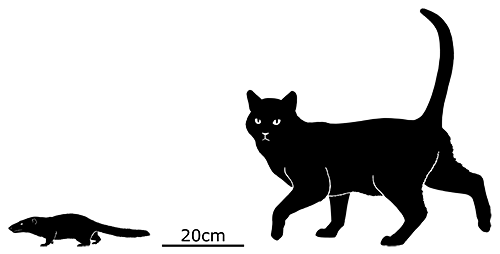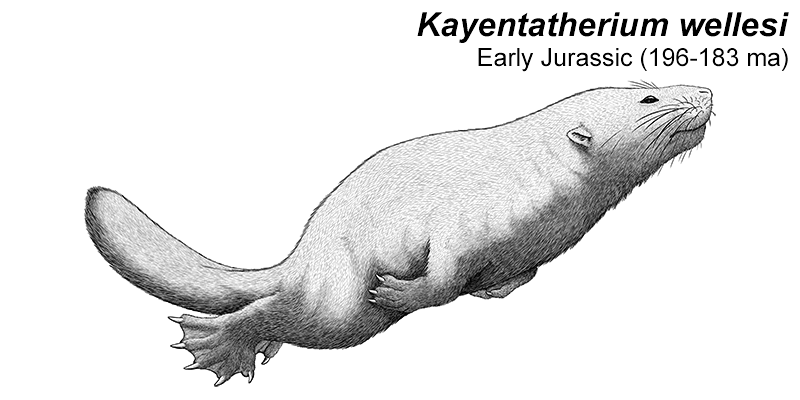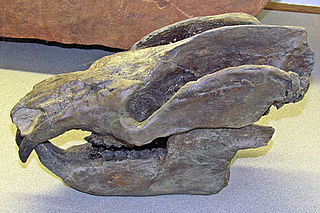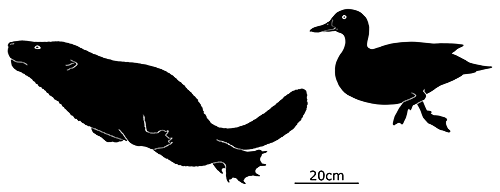Adelobasileus & Sinoconodon
The exact line between “highly mammal-like cynodonts” and “actual mammals” is very blurry. The transition was gradual and the fossil record is incomplete, and even the definition of “mammal” varies depending on who you ask. Do we take the strictest possible route and only include everything coming after the most recent common ancestor of all living mammals – the “crown group” Mammalia itself? Or do we go broader and also include the closely related Mammaliaformes, which already had some of the defining anatomical features of mammals?
(For the purposes of this theme month I’m considering mammaliaformes to count as mammals, but if you prefer the crown group definition then it’ll be a few more days before we reach Mammalia-proper.)
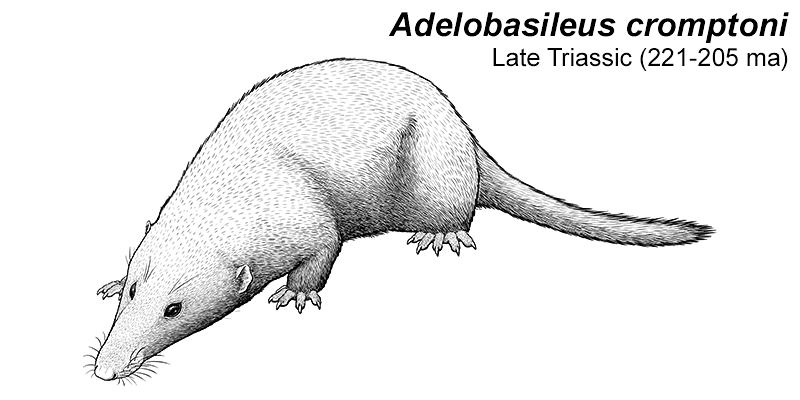
The earliest ancestral mammaliaformes would have looked something like Adelobasileus, a transitional form from the Late Triassic of Texas, USA (221-205 mya). About 10-15cm long (4-6″), it was probably a shrew-like insectivore and may have been close to the start of the hypothetical “nocturnal bottleneck” in mammal evolution – a point where mammal ancestors are thought to have taken up nighttime activity patterns to avoid competition and predation from early dinosaurs.
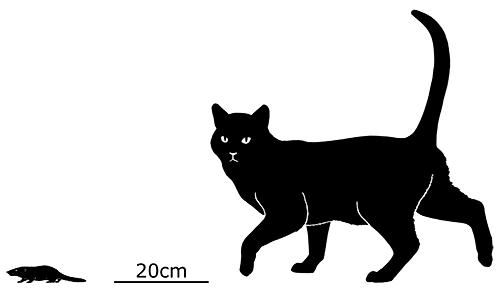
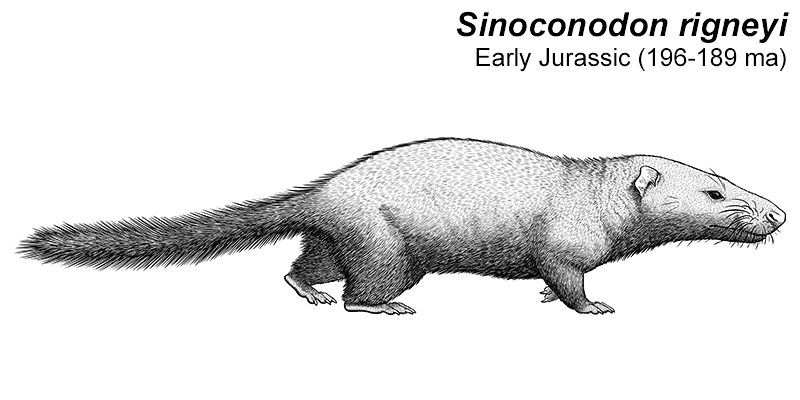
Sinoconodon is known from the Early Jurassic of China (196-189 mya). Unlike later mammals it seems to have experienced reptile-like continuous slow growth throughout its lifespan, and had multiple replacements of some of its teeth.
Fossils of several different life stages have been found, averaging at similar sizes to Adelobasileus, but the biggest and longest-lived specimens are estimated to have reached the size of a large brown rat at around 35cm long (1′2″) and 500g in weight (~18oz) – big enough to be a weasel-like carnivore feeding on small vertebrate prey.
